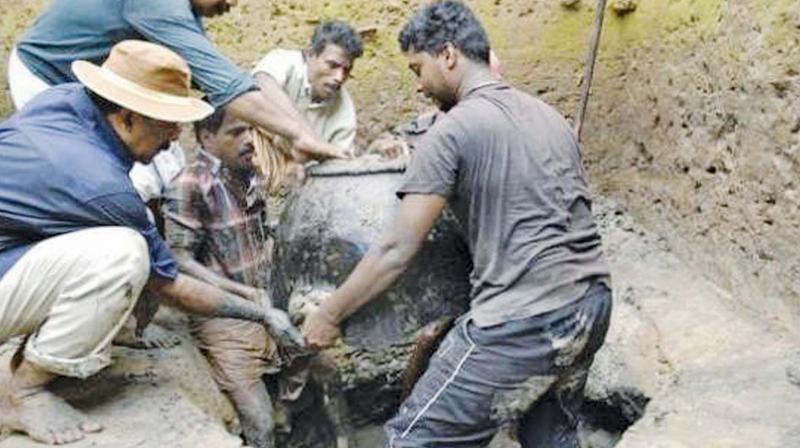Chennai: Pattanam, Keezhadi excavated materials similar, says expert
They also found rows of hollow jars, which's use they have been unable to point out.

Chennai: “The material we found at Pattanam is so similar to what Dr Bhaskar and team have found here at Keezhadi which leads me to believe that we’re all brothers and sisters,” said Professor P. Cherian, director, PAMA, Institute for the Advancement of Trans-disciplinary Archaeological Sciences, Kerala, as he spoke of the prehistoric port city of Tamilakam at the department of archaeology monthly lecture on Tuesday.
The lecture, titled ‘Reimagining Muciri-Pattinam/ Muziris: The Ancient Port City Of Tamilakam (300 BCE-500 CE),’ saw the professor speak proudly of all that his team of young researchers have excavated and all the connections that the people of Pattanam had with the rest of the world, including the Mediterranean and the Chinese civilizations.
The recent excavation of Chinese coins and ceramic pottery from the seabed of Kollam had remarkable similarity with those found in the Museum of Asian Civilization at Singapore. The pottery also matches ones found at excavations in Khor Rori, in present-day Oman, Prof. Cherian said.
At the same time, there is also remains of Mediterranean pottery being found at all the 45 excavation sites of the Tamilagam period. There are several coins and stamps with pictures of Greek goddesses. What is interesting is that the
material they are made of is purely local, he said. “All history classes only speak of the many things that came from elsewhere. Nobody speaks of what happened here,” he said.
“A man named Damo went from here and lived as a monk in China. We know of this because an emperor in the 15th century painted Damo, who lived in the 5th century,” he said.
The one thing they’re most proud of finding at Pattanam is a canoe, Prof Cherian said. His team found thick layers of clay under which was preserved a six-metre canoe made of local Anjili wood, he said.
They also found rows of hollow jars, which’s use they have been unable to point out. These were also found here, at Keezhadi, he pointed out.
“Advanced skills in metallurgy, cotton weaving and production of personal adornment items in gold, stones and glass etc., made Pattanam (Muziris) the ‘first trade emporium’ which probably was at par with today’s Shanghai, London or New York,” said Prof. Cherian.
The British Academy has already awarded a prize money of 30,000 pounds to the Pattanam excavation along with an international research partnership award with the British Museum in London.
This award is given for research projects on archaeological excavations. Prof. Cherian is also invited for lectures in the universities of Oxford and Durham where senior research fellowships and honorary research fellowships were given for the Pattanam excavation.

